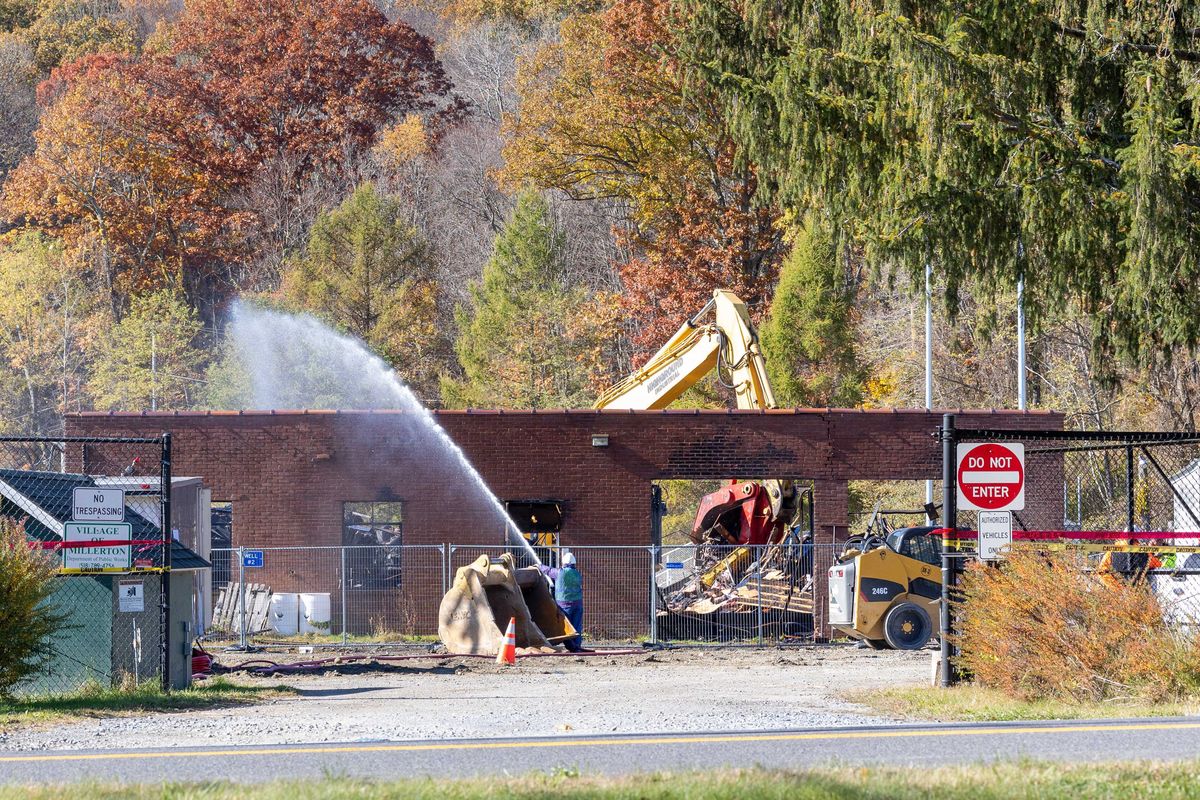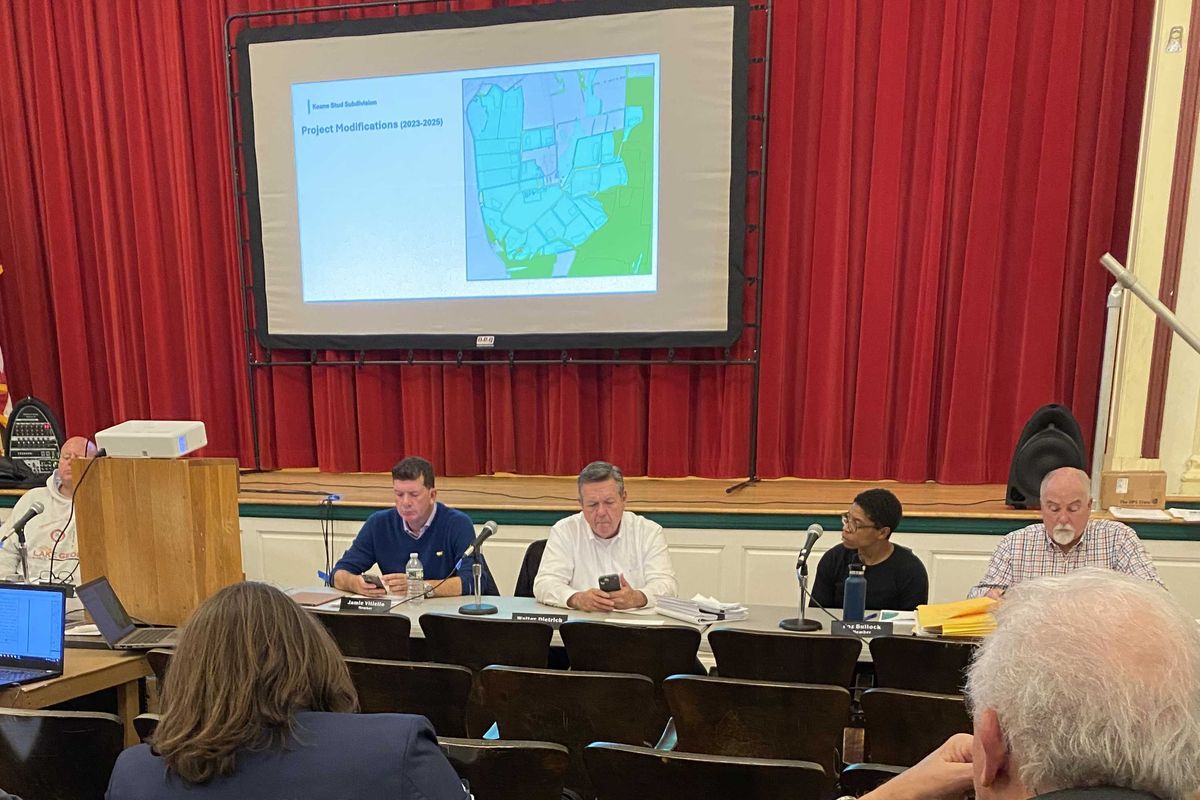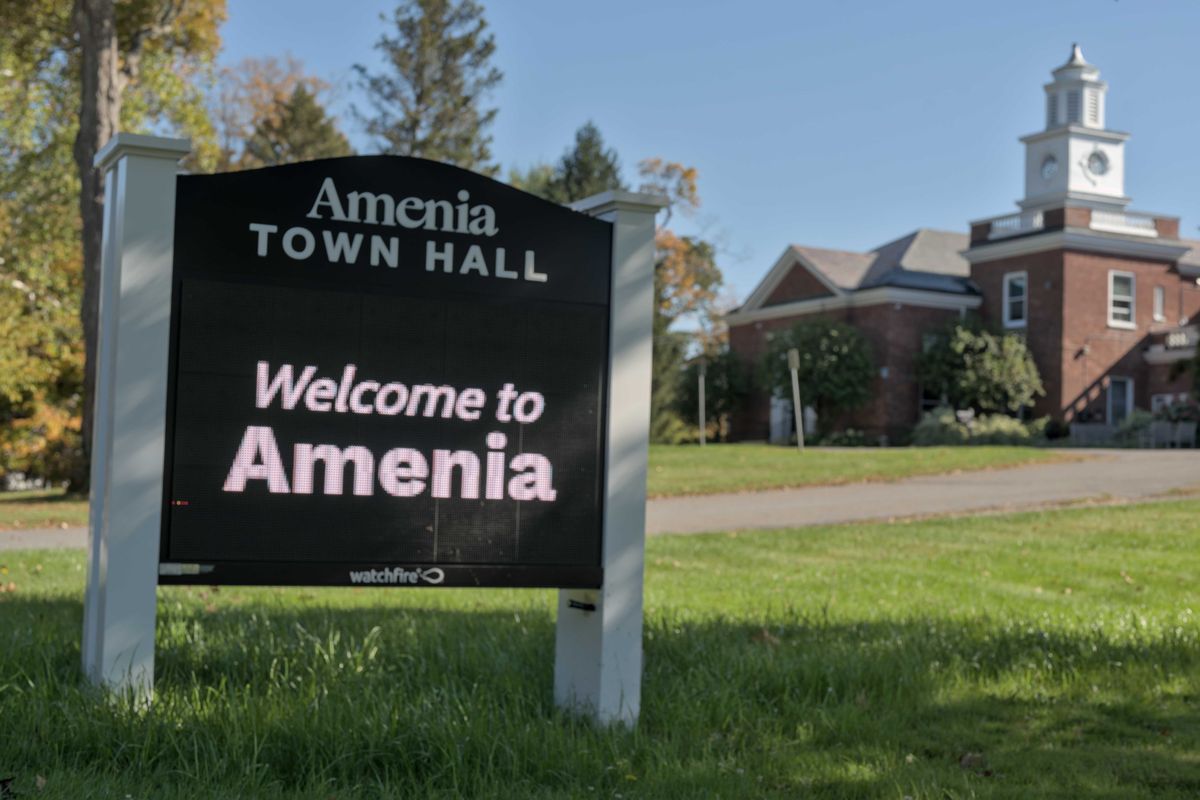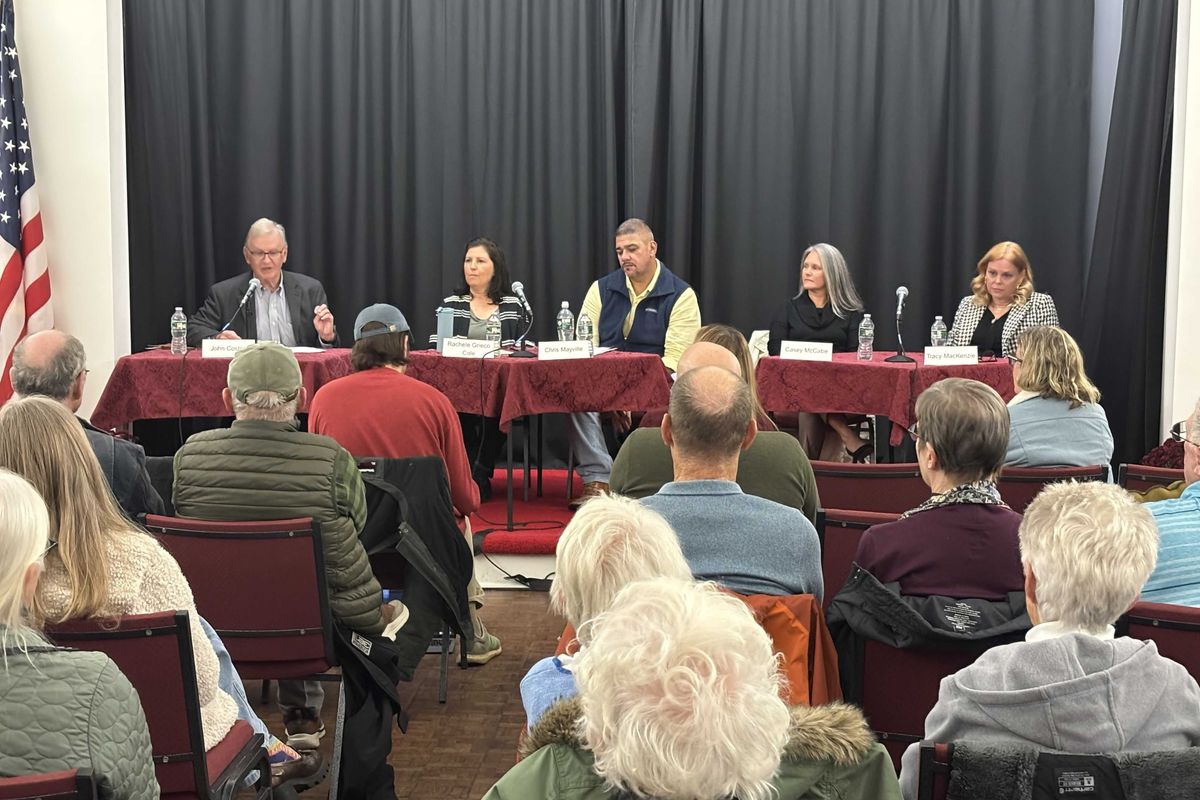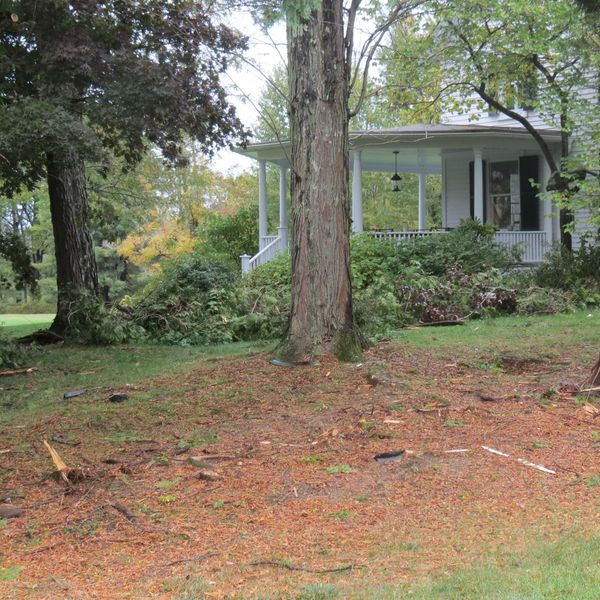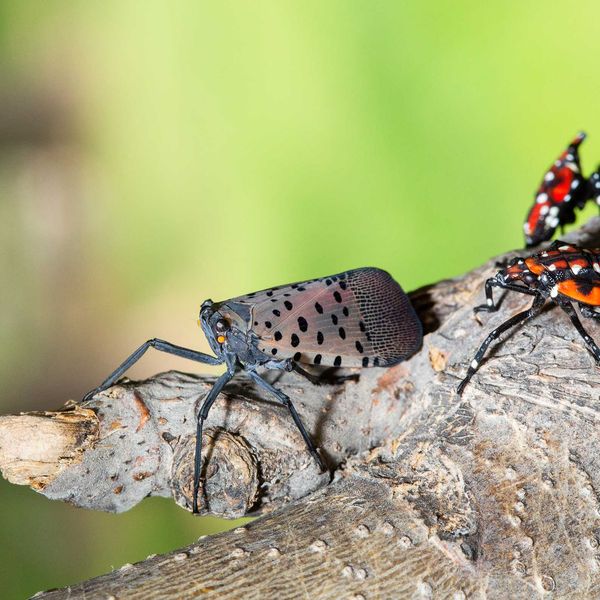Latest News
Demolition crews from BELFOR Property Restoration began demolishing the fire-ravaged Water and Highway Department building in the Village of Millerton on Monday, Oct. 27
Photo by Aly Morrissey
MILLERTON — The long-awaited demolition of Millerton’s Highway and Water Department building began Monday, Oct. 27, marking a major milestone in the village’s recovery from the February fire that destroyed the facility.
The demolition, handled by BELFOR Property Restoration, is now underway. Eddie Collins Park, located next to the site, remains open to the public, though visitors are asked to steer clear of the demolition area.
One village official is particularly invested in seeing the process move forward. Caroline Farr-Killmer, the village’s fire project manager, has been working closely with Mayor Jenn Najdek and the Board of Trustees to oversee every phase of the recovery. She has coordinated contractors and engineers, tracked inventory losses, and ensured compliance with building codes.
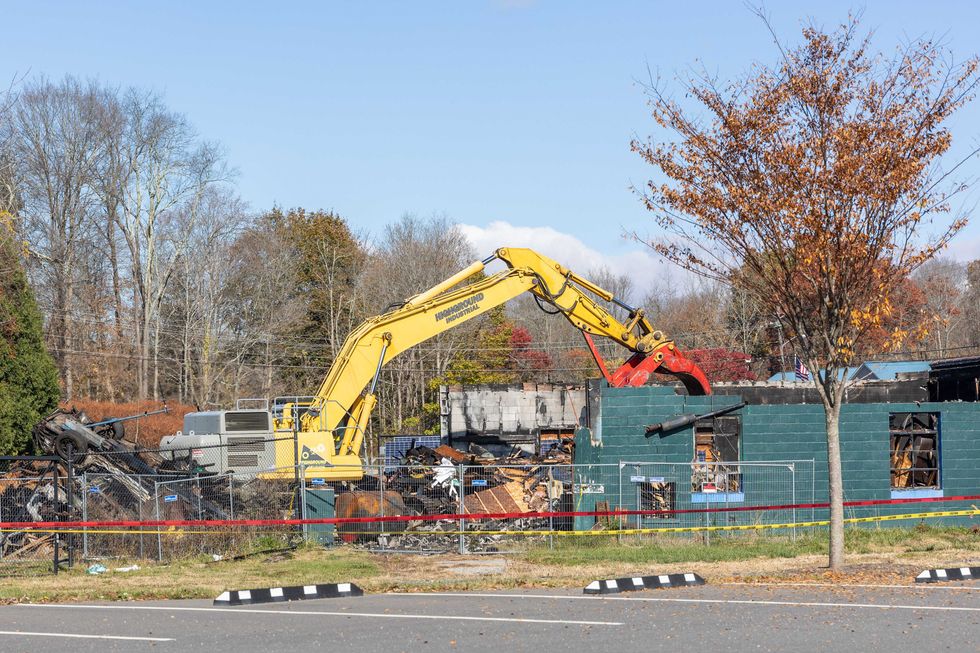
“This milestone is a significant one,” Farr-Killmer said. “It has been a work in progress that individuals have poured a lot of their time and effort into.” She acknowledged that while it may have seemed like progress was slow, this process required thoughtful and thorough management. “It is not something that can be accomplished overnight. I am grateful for the team effort put in by all of those involved.”
In the weeks after the fire, Farr-Killmer visited the charred building almost daily and documented damage to the structure and inventory. She said the fire itself was only the beginning, and pointed out that navigating insurance, rebuilding plans and deadlines have been hidden challenges.
The demolition marks the first physical step toward rebuilding. Farr-Killmer and Village leaders are developing plans for two replacement facilities — one for the Highway Department and another for the Water Department, designed to meet modern building codes and accommodate future needs.
“For the Village, it means we are starting from scratch, but things will continue to run smoothly, efficiently and effectively,” Farr-Killmer said.
With demolition underway, the Village of Millerton will begin a new chapter — one that will be complemented by the upcoming renovations that are planned at Eddie Collins Memorial Park. Construction for that major project, which will include a short-course Olympic pool and pool house, is scheduled to begin in July 2026 after the 175th celebration.
Keep ReadingShow less
A preliminary draft of an impact analysis study for a Keane Stud subdivision application drew residents to a Planning Board meeting on Wednesday, Oct. 22.
Photo by leila Hawken
AMENIA — Residents had the opportunity on Wednesday, Oct. 22, to weigh in on the proposed Keane Stud subdivision, a plan that would divide roughly 605 acres into 27 mostly residential lots, during a meeting of the Amenia Planning Board.
The session was part of the State Environmental Quality Review Act process, following the board’s decision that a Draft Environmental Impact Statement should be prepared to evaluate potential environmental and scenic impacts from the project.
The study will help inform the board’s review and approval process.
Wednesday’s meeting served as a public scoping session, allowing residents to suggest which environmental and community issues should be analyzed as part of the study.
Peter Feroe, an environmental planner with AKRF, Inc. of New York City representing the developer, presented an overview of the project and outlined the preliminary scope of analysis.
About 35 residents attended the meeting at Town Hall, where Feroe explained that the plan calls for 23 residential-agricultural lots and four lots to be set aside for conservation and equestrian use. Two of the preserved parcels would remain forested as conservation areas, while the other two would support equestrian activities.
The 23 lots would be sized at 10 acres each. Since the entire area is within a designated Scenic Protection Overlay District, the layout requires Planning Board approval.
The proposal calls for the 23 lots to be served by three roads that presently exist as farm roads on the acreage, Feroe said, although the three roads would need to be improved for use.
“This is not a public hearing on the subdivision application,” Planning Board attorney Paul Van Cott said, noting that the decision will be made after the completion of the impact studies.
“There will be full public hearings on the impact studies and on the full Keane Stud subdivision application, perhaps two months from now,” Van Cott said.
Feroe reviewed maps of the property located on Depot Hill Road, off Old Route 22. Nine of the ten acres on each lot would be conserved.
“A full 90% of the site would be reserved for agriculture,” Feroe said, noting that no buildings are envisioned as part of the subdivision application. Purchasers of the lots would need to come before the Planning Board for site plan approval.
The Planning Board had asked the applicants to consider the effects of future potential residential build-out on the acreage.
“The goal is to continue to promote agriculture to preserve the rural character,” Feroe said, noting that the town’s comprehensive plan favors balance in development.
Since planning for the subdivision began in 2021, Feroe said, multiple project modifications have been made, including reductions in size, removal of lots, and revisions to the layout. The maximum home footprint was scaled back, and the maximum home height reduced to 28 feet.
All development restrictions imposed by the Planning Board would be included in covenant deed restrictions to be adhered to by lot purchasers, Feroe noted.
Residents’ comments centered on the theme of a feared loss of agricultural heritage inherent to the community’s character, and the desecration of the view from the DeLaVergne Hill lookout to the west.
Resident George Bistransin spoke of diminished agriculture in the area and its impact on farming, noting that he now buys hay from a Salt Point supplier for his animals.
Mark Doyle, representing the Conservation Advisory Council, described potential impacts on water bodies and active farmland.
“There should be no division or construction on the viewshed area,” said resident Sharon Kroeger, secretary of the Committee to Save the View from DeLaVergne Hill, an organization dedicated to protecting the viewshed seen as key to the community’s identity.
Recalling his past experience serving on the Planning Board, Town Supervisor Leo Blackman spoke of the iconic view from DeLaVergne Hill, called by many the “Gateway to the Berkshires.”
Blackman said he was troubled by the idea that the unobstructed agricultural land would be broken up, suggesting the house lots should be separated from the agricultural expanse.
The next Planning Board meeting, on Wednesday, Nov. 12, is expected to include adoption of the final draft of the current scoping analysis. The study can be viewed in full on the town website.
Keep ReadingShow less
Amenia Town Hall on Route 22.
Nathan Miller
AMENIA — Amenia budget officer Charlie Miller has been accused of submitting the town’s tentative budget with an old signature from Town Clerk Dawn Marie Klingner.
Klingner said she reported the issue to the Town Board in executive session on Oct. 3, prompting members to assign the town’s labor attorney, Robert Schofield, to investigate.
Officials say the issue stems from Miller’s use of an old cover page that included Klingner’s digital signature. Miller, who serves as the town’s budget officer, said the incident was unintentional.
Miller said the problem began with a computer error while assembling the file. He said he failed to save the document properly and lost most of his work. When he went back to recreate the file, he said he hastily put it together with the wrong cover page and sent it to Klingner and Blackman by email.
“It’s an honest mistake,” Miller said.
But Klingner said the action circumvented her duties as Town Clerk.
“I’m legally responsible for receiving and certifying the budgets, and my responsibility was taken from me when someone else used my signature and seal without my knowledge or consent,” Klingner said.
Miller reports directly to Blackman, who serves as chief financial officer for Amenia as part of his duties as Town Supervisor. As budget officer, Miller said he assists in drafting the budget but has no other control over the town’s finances.
Miller said he has cooperated with the investigation.
“The town board — I think rightly — engaged the town’s labor attorney to look into it, and so I completely support that process,” Miller said. “But that process should play out, in my opinion.”
The investigation comes as Miller, who is running for Town Board, faces a wave of rumors in the days leading up to the election that he said are unfounded. Rumors — which surfaced on now-deleted public posts on FaceBook — range from breaking in to the Town Clerk’s office to forging notary seals.
“There are a lot of extremely false accusations being thrown at me, which to me, looks very much like a political hack job,” Miller said, noting the election is just days away. “It’s almost bordering on libel at this point.”
Klingner said her report only concerned improper process in submitting the tentative budget and denied Miller broke into her office or forged a notary seal.
“I don’t want this to become a political matter,” Klingner said. “It’s not good for this board or this town — and I respect the work that Charlie has done here — but this is not the first time that we’ve had issues with process.”
Keep ReadingShow less
Millerton and North East residents crowded into the NorthEast-Millerton Library Annex on Friday, Oct. 24, to hear from 10 candidates seeking office.
Photo by Christian Murray
MILLERTON — A crowd of about 60 people filled the NorthEast-Millerton Library Annex for a political Q&A session with candidates for local and county offices on Friday, Oct. 24.
Panels of candidates rotated across the stage, answering questions submitted beforehand and impromptu questions from audience members in the room.
Each candidate was given four minutes to make an introductory statement and one minute each to respond.
Election Day is set for Tuesday, Nov. 4, with polls open countywide from 6 a.m. to 9 p.m. Early voting began Saturday, Oct. 25.
North East Town Board candidates Rachele Grieco-Cole and Chris Mayville, each running unopposed for a two-year term; North East Town Justice candidate Casey McCabe and Family Court Judge candidate Tracy MacKenzie took the stage first.
North East Town Board
Grieco-Cole focused on her experience in grant-writing and fundraising during her opening remarks, promising to aid the town in securing funding for crucial projects.
Mayville, who has been on the board since 2023, highlighted concerns over the rising cost of emergency medical services — and ambulance service more specifically — and said he focuses on growth and development that works with the town’s values and needs.
Millerton resident Lenny Sutton asked the board candidates for a timeline on the wastewater treatment system.
“It’s still a recognized need in town,” Mayville said. “Unfortunately, the original grant that we anticipated getting was taken back.”
Mayville said town and village officials are still pursuing the wastewater treatment project and asked moderator John Coston, the former executive editor of the Lakeville Journal and Millerton News, if Village of Millerton Mayor Jenn Najdek could offer an update from the audience.
“No,” Coston said to laughter in the room. “The Mayor’s off the hook tonight.”
A submitted question from North East resident Bill Kish centered on transparency in the town government.
“I’ve been attending North East Town Board meetings for many years, and in all that time I don’t think I can remember a meeting where the board actively discussed or debated an action they were contemplating,” Coston read on behalf of Kish. “Do you think this is the right way for government to function? If yes, why? If not, how would you change things?”
Grieco-Cole said she values robust debate and conversation, and asserted an appreciation of differing opinions.
“I’m pretty forthright and I speak my mind,” Grieco-Cole said. “And I believe in debate. I think it’s the bedrock of our democracy.”
Mayville offered a defense of his record while acknowledging he agrees with the premise of Kish’s question.
“If there’s a resolution up on the agenda and it’s not something I feel I have enough information on, or there hasn’t been — in my mind — adequate discussion, I will and have asked that that be tabled so discussion can occur,” Mayville said. “Additionally, I’ve also asked for the Town Board to consider adding an additional meeting just for that purpose.”
Town Justice and Family Court Judge
North East Town Justice candidate Casey McCabe opened by explaining her role as the town’s sitting judge and how the local court system works.
“We are the court closest to the people,” McCabe said. The town court handles misdemeanor offenses, traffic tickets, landlord/tenant disputes and small claims suits.
“We work really hard to make sure the court is accessible, it’s user-friendly,” McCabe said.
Sitting Family Court Judge Tracy MacKenzie described her work on the county-wide bench of four judges handling custody and juvenile delinquency cases.
Both MacKenzie and McCabe are running unopposed for reelection.
Questions focused on bail.
“Bail is not something we see very often,” McCabe said, explaining that misdemeanors don’t qualify for bail under New York State law. But bail is a tool, she said, that just needs to ensure people return to court at a later date.
Dutchess County Court Judge
Dutchess County Court Judge candidates Ned McLoughlin, an incumbent, and his challenger Kara Gerry took the stage second.
Gerry opened by outlining her career, beginning as a prosecutor in the Orange County District Attorney’s Office before moving briefly into private practice. She has spent the past 13 years with the Dutchess County Public Defender’s Office.
“People aren’t born criminals,” Gerry said. “Circumstances such as childhood abuse, poverty, homelessness, domestic violence, addiction, mental illness are really the driving factors that seem to push people into being charged with crimes.”
McLoughlin highlighted his 23-year career as a prosecutor in Dutchess County, saying he never lost a trial. He said he has presided over murders, burglaries, domestic abuse and other serious cases, also serving as a Supreme Court judge.
“When it comes to violence against women and children and vulnerable people, I’m known as a very strong, law-and-order judge,” McLoughlin said.
McLoughlin also mentioned addiction, saying habitual drug abuse is a disease that drives people to hurt those they love the most.
“The cases I’m really most proud of are the ones where I bring somebody in and they’re addicted,” McLoughlin said. “And I use the levers that I have to motivate them and encourage them to use an entire diner menu of programs that we have to get them past it and be able to get back to their family.”
Questions for the candidates focused on the rule of law and how they would defend the U.S. Constitution.
“A judge needs to handle every case that comes before the court with an open mind,” Gerry said. “Consider the individual, consider the background — but apply the law fairly, evenly and consistently.”
“The Bill of Rights and the criminal procedure is here to protect every one of us,” McLoughlin said. “When I see someone come into my courtroom it’s a very stressful moment for them. They’re afraid, they’re not sure what the future looks like. It’s my role to make sure they understand that they’ll be treated fairly.”
Dutchess County Legislature
County legislature candidates for District 19 Chris Drago, a Democrat, and Tonya Pulver, a Republican, took the stage next.
Drago, the incumbent representing Pine Plains, North East, Milan, Stanford and the Village of Millerton, highlighted his first-term record. He cited his work securing grant funding for low- and middle-income residents to build or upgrade accessory dwelling units through New York’s PlusOne ADU program and raising awareness about the rising cost of emergency medical services in rural areas.
Pulver, a school psychologist for the Millbrook Central School District, said she is running to expand mental health services and give voters a choice at the polls. Her husband, former Legislator A. Gregg Pulver, held the seat until Drago unseated him in 2023.
Both candidates asserted county government could be doing more for residents of northeast Dutchess County, saying mental health services and emergency medical services are major challenges for the region.
Drago noted his efforts to bring more accessible mental health care to the area, including arranging for the county’s Mobile Health Unit to visit Millerton monthly. Pulver said she would continue advocating for the Dutchess County Crisis Center and Mobile Crisis Center to strengthen mental health support.
Dutchess County Comptroller
Incumbent Democrat Dan Aymar-Blair, who was elected to serve the remainder of a term in a special election in November 2024, and his challenger Will Truitt, the current Chair of the County Legislature, took the stage last in the forum.
Aymar-Blair highlighted his career managing budgets and operations for New York City Public Schools and working in finance at Goldman Sachs. He said the comptroller must remain independent from policymakers, arguing that a long tenure in the legislature should disqualify a candidate.
“I need, as comptroller, to look at the work that passes through our office with clear eyes and an objective lens,” Aymar-Blair said. “If I had been involved in passing that policy — if I had been in the county legislature for the past ten years — I would tell you that I should not be your comptroller.”
Truitt cited his 10 years in the county legislature and his experience as CFO of Hopewell Junction-based Metzger Construction. He said his experience on the budget and finance committee and now as chair prepared him to oversee county finances.
He studied finance and accounting at Marist University. “Most people would think, ‘Will, you like politics. Wouldn’t you have majored in political science?’” Truitt said. “No, because I never wanted politics to be a career. I wanted to make sure I had a background that prepared me for the real world — for the business world.”
Audience questions about government waste prompted Aymar-Blair to list a series of expenses that he said could have been avoided with proper planning.
Truitt countered that his legislative experience was an asset.
“Ten years serving in the legislature — while my opponent may think it’s not good experience — I do believe it’s good experience,” Truitt said. “Building relationships with our county employees and the people who do business here in the county.”
Keep ReadingShow less
loading

